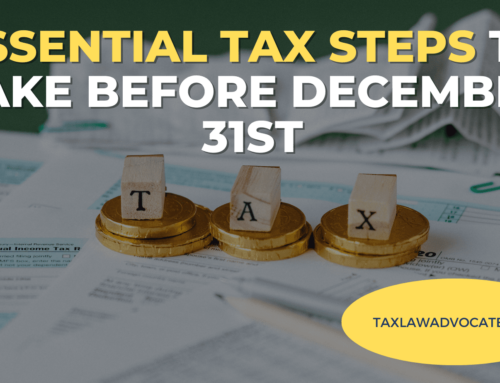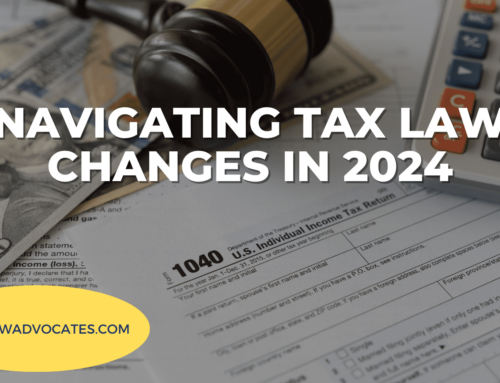Wage garnishment by the IRS can be a distressing experience, as it directly impacts your income and financial well-being. However, there are strategies you can employ to stop IRS wage garnishment and find immediate relief. Continue reading to learn effective strategies and actionable steps to halt IRS wage garnishment and regain control of your finances.
Understanding IRS Wage Garnishment
Before diving into the strategies, it’s essential to understand what IRS wage garnishment entails. Wage garnishment is a legal process through which the IRS can collect unpaid taxes directly from your wages or salary. When the IRS initiates wage garnishment, a significant portion of your paycheck is withheld and redirected towards your tax debt. This can cause financial hardship and create a challenging situation for individuals and families.
Act Promptly to Stop IRS Wage Garnishment
The first step in stopping IRS wage garnishment is to act promptly. The longer you wait, the more challenging it becomes to halt the garnishment and negotiate a resolution. Here’s what you can do to take immediate action:
Assess Your Current Financial Situation
Start by assessing your current financial situation to gain a clear understanding of your income, expenses, and outstanding tax debt. This evaluation will help you determine the appropriate course of action and identify potential solutions.
Communicate with the IRS
Direct communication with the IRS is crucial when facing wage garnishment. Contact the IRS immediately to discuss your situation and explore possible alternatives. Be prepared to provide detailed information about your financial circumstances, including any hardships you may be experiencing.
Request a Wage Garnishment Release
To stop wage garnishment, you can request a release from the IRS. This can be done by demonstrating financial hardship or presenting a viable repayment plan. Here’s how you can approach this:
- File Form 12153: Complete and submit Form 12153, Request for a Collection Due Process or Equivalent Hearing, to request a wage garnishment release. This form initiates a hearing process during which you can present your case and propose an alternative resolution.
- Provide Supporting Documentation: Along with Form 12153, include supporting documentation that substantiates your financial hardship or showcases your proposed repayment plan. This may include pay stubs, bank statements, bills, and other relevant financial records.
- Present Your Case: Attend the hearing prepared to present your case effectively. Clearly articulate your financial situation, emphasizing any hardships you are facing and the steps you have taken to address your tax debt.
Explore Offer in Compromise (OIC)
Another effective strategy to stop wage garnishment is to explore an Offer in Compromise (OIC) with the IRS. An OIC is an agreement that allows you to settle your tax debt for less than the full amount owed. Here’s what you need to know about the OIC process:
- Determine Eligibility: Work with a tax professional to determine if you meet the eligibility criteria for an OIC. Factors such as your income, assets, expenses, and overall financial situation will be considered in the evaluation.
- Gather Required Documentation: Prepare and submit the necessary documentation to support your OIC application. This may include financial statements, tax returns, income verification, and a detailed proposal outlining your offer.
- Negotiate with the IRS: Engage in negotiations with the IRS to reach an agreement on the amount to be paid through the OIC. Tax Law Advocates can provide expert guidance throughout this process, ensuring you present a strong case and maximize the chances of a favorable outcome.
Consider an Installment Agreement
If halting wage garnishment through a release or Offer in Compromise isn’t feasible, you can explore the option of an Installment Agreement. This arrangement allows you to repay your tax debt in manageable monthly installments. Here’s how you can proceed:
- Assess Your Ability to Pay: Evaluate your financial situation to determine how much you can afford to pay each month towards your tax debt. Consider your income, expenses, and other financial obligations to arrive at a realistic figure.
- Submit an Installment Agreement Request: Prepare Form 9465, Installment Agreement Request, and submit it to the IRS. In this form, you will provide details about your proposed payment plan, including the amount and frequency of payments.
- Review Payment Options: The IRS offers various payment options for installment agreements, such as direct debit, payroll deduction, online payment, or check. Select the method that works best for you and ensures timely payments.
- Adhere to the Agreement Terms: Once your installment agreement is approved, it’s crucial to honor the terms by making consistent and timely payments. Failure to comply may result in additional penalties and could jeopardize the agreement.
Seek Professional Assistance from Tax Law Advocates
Navigating the complexities of IRS wage garnishment and finding the most effective strategies for relief can be challenging. That’s where the expertise of Tax Law Advocates comes in. Our seasoned tax professionals have a deep understanding of tax laws, IRS procedures, and the negotiation process. Here’s how they can assist you:
- Comprehensive Assessment: Tax Law Advocates will conduct a thorough assessment of your financial situation, tax debt, and wage garnishment status. They will analyze the details and determine the best course of action tailored to your specific circumstances.
- Strategic Guidance: With their in-depth knowledge and experience, Tax Law Advocates will provide you with strategic guidance on the most suitable options available to stop wage garnishment and reduce your tax debt. They will explain the pros and cons of each approach, empowering you to make informed decisions.
- Effective Representation: When dealing with the IRS, having professional representation can significantly impact the outcome. Tax Law Advocates will act as your advocate, communicating and negotiating with the IRS on your behalf. They will present your case persuasively, aiming for the best possible resolution.
Contact Tax Law Advocates
Dealing with IRS wage garnishment can be overwhelming, but it’s essential to remember that there are effective strategies to stop it and regain control of your finances. By acting promptly, communicating with the IRS, exploring options like a wage garnishment release, Offer in Compromise, or an Installment Agreement, you can find immediate relief.
Remember, every taxpayer’s situation is unique, and it’s essential to consult with a tax professional like Tax Law Advocates who can provide personalized guidance tailored to your specific circumstances. Don’t let IRS tax debt hold you back any longer. Take action today and start your journey towards reducing your tax debt and reclaiming your financial stability.
If you’re experiencing IRS wage garnishment or have concerns about your tax debt, don’t hesitate to reach out to Tax Law Advocates. Our team of experienced tax professionals is ready to provide expert guidance and assist you in stopping wage garnishment. Call today at 855-612-7777 to schedule a consultation and take the first step towards resolving your tax debt.






